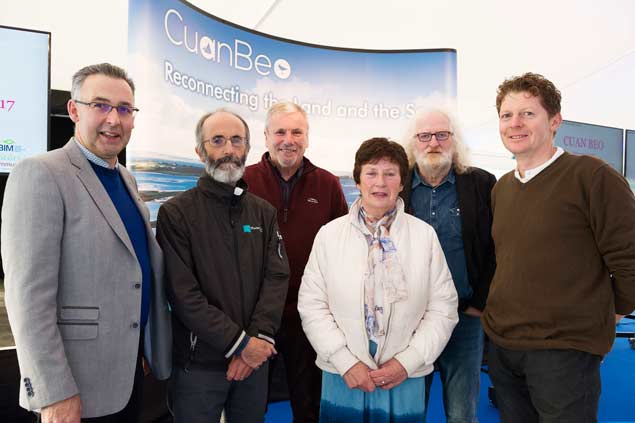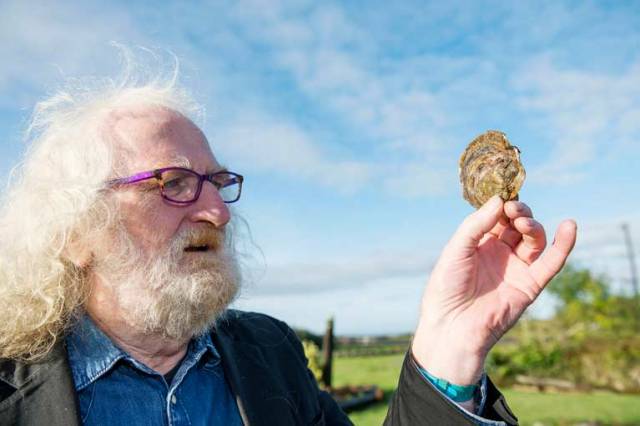A Native Oyster Workshop has drawn on heritage and science to highlight the importance and future of the Native Oyster fisheries across Ireland during the Clarinbridge Oyster Festival.
Cuan Beo, a recently formed community based organization established with a mission of improving the quality of life, environment, economy and heritage around Galway Bay highlighted the need for action to restore the Native Oyster stocks across Ireland during the Native Oyster Workshop (NOW17) which was held in Clarinbridge last week Thursday 5th October 2017.
The workshop brought together Native Oyster Fishermen from the 8 remaining oyster fisheries in Ireland together with the relevant agencies responsible for their governance to develop a plan towards their restoration. The workshop heard that the native Oyster fisheries have been in decline for the past 200 years and are currently at an all-time low. Factors such as poor water quality, absence of fishery management plans, complex governance structures and overfishing have all contributed.
According to Diarmuid Kelly, Chairman of Cuan Beo, the aim of the workshop was to review the current status of the Native Oyster fisheries along the Atlantic coast of Ireland, to discuss the issues impacting on their productivity and identify a roadmap towards the effective management and restoration of Oyster Beds and to restore sustainable production output from these fisheries.
 Cuan Beo committee members Diarmuid Kelly, Kelly's Oyster, Ollie Tully, Marine Institute, Seamus Breathnach BIM, Mary Gerry O'Halloran, and Colm O'Dowd Photo: Andrew Downes
Cuan Beo committee members Diarmuid Kelly, Kelly's Oyster, Ollie Tully, Marine Institute, Seamus Breathnach BIM, Mary Gerry O'Halloran, and Colm O'Dowd Photo: Andrew Downes
While Galway and Clarinbridge is synonymous with the oyster, its ecological status is poor. The situation is similar across Europe. It is listed by OSPAR as ‘threatened and declining’ and is listed as a priority habitat in the UK and in many areas in Ireland, including Galway Bay. The native oyster is subject to conservation objectives and is seen as a significant component species in Special Areas of Conservation (SACs). The workshop heard that much of the legislation is complex, misinterpreted and misunderstood.
Prof Noel Wilkins (NUI Galway) presented on the history of the native oyster beds in Galway Bay from times of super-abundance and tracking their decline to the present day. This was coupled with presentations from government agencies including the Marine Institute, the SFPA, Waters and Communities and BIM highlighting challenges relating to their restoration including licensing and governance, disease, water quality, fisheries management and displacement by invasive species. Case studies from successful fisheries were presented from Lough’s Agency in NI and Tralee Co-op.
An action plan was agreed at the workshop to create a national working group in the coming weeks. The group would not just lobby for simplification in governance but also to address assessment and up-skilling of existing co/op management in each area and the provision of support and assistance in developing management plans for each fishery. BIM agreed to coordinate the establishment of this working group.
The day-long event concluded with the official launch of Cuan Beo, by Cllr Eileen Mannion Caothairlaoch of County Galway. The launch was also attended by Seán Kyne TD Minister of State at the Department of Rural and Community Development and the Department of Communications, Climate Action and Environment with responsibility for Natural Resources, Community Affairs, and Digital Development. Niall Sabongi (KLAW Restaurant Dublin) held a masterclass in oyster tasting with a selection of native oysters from the various fisheries across Ireland and the event was concluded with a lecture highlighting the importance of the oyster in Galway Bay from pre-historic times (4000BC) to the present day by Local Archaeologist and historian, Michael Gibbons.































































